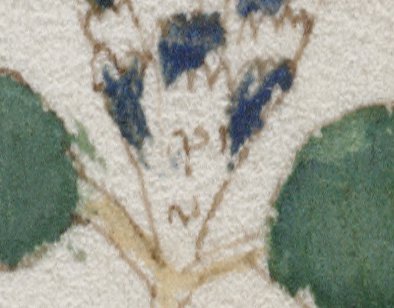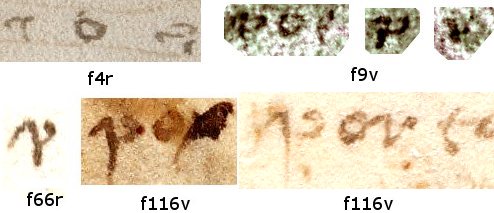[Here are links to chapters 1, 2, 3, 4, and 5. Enjoy!]
* * * * * * *
Absent-mindedly dusting breadcrumbs off a beard no longer there, Graydon Harvitz paused in thought at the glass doors of the Beinecke Rare Book and Manuscript Library. Was the building a sublime symphony in concrete for keeping old books alive, or a big ugly mausoleum for entombing struggling grads?
More immediately, was his ex-wife Marina there to bury the hatchet or to twist the knife?
He tried – not entirely successfully, it has to be said – to console himself that she was almost certainly far too busy servicing her own self-gratificatory academic career to try to destroy his rapidly withering vineage. Taking a deep breath and holding grimly on to that reassuring feeling of irrelevance, he launched himself inside: but, as had always been the case, Marina caught sight of him within microseconds and marched over, her red hair and sharp eyes a visual siren, ringing alarm bells deep in his soul.
“Graydon, you useless ass,” she spat, missing neither a semiquaver nor a beat, “if you’ve checked into Planet Yale to rain on my freakin’ parade…”
“Nice to see you too, Marina”, he soothed, “glad those anger management classes are finally paying off.”
They stood there in the lobby, gladiatorially nose to nose. The time that they’d loved each other so intensely, feasting on each other’s rich minds and young bodies in an intellectual and physical fugue, was so long ago now – it may as well have been another life entirely. Everyone had said they’d been mad to get married while still at college: and yes, everyone had indeed been proved right. Guess that’s what happens when you surround yourself with clever bastards, he mused.
“So”, she glared, “still using blank maps to hunt for a snark?”
“I prefer to think of it”, Graydon murmured, “as trying to pick the right snark. A lot of fish in that sea.”
It was, of course, the Voynich Manuscript that had ripped them apart. Right at the height of their mutual obsession, Marina had seen a lecture on the tables and grilles Gordon Rugg asserted had been used to construct its “Voynichese” text, and had been simply electrified. In a moment, the polarities of all the mysterious deep magnetisms holding the couple together – the passion, the logic, the sheer quest-iness – had been dramatically reversed. Everything that had joined them so tightly suddenly divided them with equal force.
And now it was the Voynich Manuscript that had brought them back together, if only for a day. Or rather, for however long during that day Graydon could manage to avoid being killed by her.
Out of the corner of his eye, he saw one of the film crew surreptitiously filming their spat. “You’d better get back to your Quattrocento Candid Camera”, he said to her, methodically rotating a middle finger to the vertical in the direction of the cameraman. “The French love their romans historiques, don’t they?”
“Actually, it’s part of a series on the science of meaninglessness and hoaxes”, she sniffed, “not that a mid-ranking historian such as you would recognise capital-S ‘Science’ if it stamped on your damn foot.”
Oh yes: hadn’t she just loved leaping on C. P. Snow’s “Two Cultures” Arts vs Science bandwagon, as yet another way of post-rationalizing and institutionalizing their separation. Really, Marina was not unlike the “little girl who had a little curl, right in the middle of her forehead”: when she was good, she was very very good – but when she was bad, she was utterly horrid. In that way, her logic was resolutely Aristotelian: unable to even exist in the excluded middle between the two extrema of true and false.
Yet since their divorce, Graydon had found himself becoming ever greyer: though not in the sense of being dull, but rather that he found his belief in the black and white certainties that Marina worked with gradually fading. Working so long with the Voynich Manuscript’s overlapping uncertainties had stripped him of his ability to see things in absolute terms.
And then – suddenly jolting them both out of bullet-time back to the present – Mrs Kurtz came over and gently took Marina’s arm, leading her off towards the stairs, to the room downstairs that had inevitably been prepped up for the filming. And as they turned to move away, Graydon could swear – for one curious moment – that he saw the formidable Mrs Kurtz wink at him. What? Mrs Kurtz, winking at him? What was that all about?
As the building quickly swallowed up the two women and the crew, the elderly security guard came over from the front desk and silently handed him a note. Graydon opened it out:
“Davis will let you through to the staff room. Lots to do! Emm x”
The guard wordlessly guided him round to the door and keyed in the access code. As he went through, Graydon was amazed to see the staff room table filled with dossiers, scans, diagrams, graphs, and even pictures of him. Behind them sat Emm deep in beautiful thought, running her fingers over ultra-high-resolution micro-photographs of the Voynich Manuscript he didn’t know existed. The unexpected notion that the Beinecke curators had some Voynich secrets they didn’t want let out began to form in his mind… but all the same, it did have the air of a somewhat creepy job interview.
“Do you expect me to talk, Miss Goldfinger?”, he said.
“No, Mr Harvitz, I expect you to die!”, Emm replied, “particularly if you keep butting up against your ex-wife like that.”
“OK… but would it be rude of me to ask, ummm… what the heck’s going on here?”
“It’s very simple”, Emm plonked. “Marina’s here to prove that the Beinecke’s star exhibit is garbage. But Mrs Kurtz has other ideas. And, much as we all hate the concept, right now you’re probably the library’s only hope.”
“You mean, Mrs Kurtz wants li’l ol’ me to find a way to rescue the Voynich Manuscript’s reputation while simultaneously destroying my bitter ex-wife’s international TV career and getting my PhD?”
“Yup, that’s basically it. So, behind your back over the last few weeks, Mrs Kurtz has been secretly getting you all the ammunition you’ll need. As long as you load the gun, she’s more than happy to fire it. Sorry, I thought you’d worked all that out already.”
Graydon paused, perplexed, the politics and permutations pirouetting precipitously in his washing-machine mind.
“I… guess I only really have one question. Where do I sign?”



